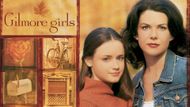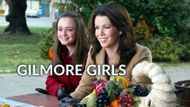When Gilmore Girls first premiered back in October 2000, it was a game-changer. We got introduced to the hyper-verbal mother-daughter duo, Lorelai and Rory, just flinging pop culture references and coffee cups like nobody’s business. The show had this cozy, small-town vibe, but also didn’t shy away from highlighting messy relationships and being ambitious. Compared to what else was on TV, such as Friends or Dawson’s Creek, it just hit different.
Fast-forward twenty-plus years, and the Gilmore Girls machine is still rolling, whether it is binge-fests on Netflix, TikTok edits, or people fighting about Team Jess vs. Team Logan. There’s something about the show’s mix of snarky feminism and relatable energy that keeps pulling in new fans. That said, the internet is definitely clocking how white the cast is and how some of that “girl power” talk feels a little early-2000s basic by today’s standards.
So, could the OG formula even survive if it debuted in 2025? Or would it just get roasted on social media before the first commercial break? Some elements of the show would serve the 2025 audience, while others would need reimaging to serve the current market. But, how so?
Let’s dig into that. We’ll get into what the TV biz folks are saying, how audiences are shifting, and which parts of Stars Hollow would probably still slap even in the TikTok era. What would have to change, and what bits are just untouchable?
Disclaimer: This article is based on the author's opinions. Reader discretion is advised.
Streaming-era storytelling: Format, pace, and episodic structure in Gilmore Girls

Binge-watching and serialized narratives
Back in the 2000s, network TV was all about the “episode of the week.” Gilmore Girls mostly did its own thing with storylines wrapped up in each episode, and hardly any of that tangled, season-long drama. Fast forward to now, people want their TV in big arcs. Everyone is glued to these endless marathons, and if a show doesn’t dangle a fresh mystery or cliffhanger every episode, it’s done for.
The old Gilmore Girls vibe was cozy and slow, like sipping coffee on the porch. But if they dropped it now, you’d probably see Rory caught up in some sprawling career saga, or Lorelai’s love life spinning out over ten episodes, instead of being sorted out in one. Showmakers would elevate the drama, but hopefully not lose all the quirky charm.
Hybrid models for modern audience engagement
Not everyone is sold on this all-or-nothing serialization, though. Some showrunners are mixing it up with a little of the old, a little of the new. Research from FilmLA and TV chatter recommends blending stand-alone episodes with big, season-long stories to keep things spicy and bingeable.
That could mean keeping the Gilmore Girls' poignant, funny one-offs while tackling more serious subjects like mental health, career changes, or family strife that persists throughout the season. Similar to what BoJack Horseman or The Crown do.
Evolving family and community dynamics

Family life: Intergenerational complexity and remote connectivity
Family life in the U.S. has changed since 2000. In 2025, people marry later (if at all), kids are optional, and half our “family moments” are delivered through screens. That classic holiday dinner is a Zoom call now.
If Gilmore Girls got a reboot in 2025, Lorelai would be running her inn from a laptop, occasionally yelling at her WiFi for having disconnected her during a business call. Rory is not choosing between Harvard and Yale anymore; it’s more like, do I freelance for three startups or chase that one remote gig in Berlin?
Instagram DMs would replace coffee dates. Family drama would be more like who didn’t like whose post, or who brought their AI boyfriend to Thanksgiving via hologram.
Community: Small towns in a global world
Stars Hollow used to be all about bake sales and quirky neighbors who just showed up uninvited. But now, social media has dragged even the smallest towns into the global circus. Teenagers there aren’t just gossiping over Pop-Tarts; they’re running viral TikTok accounts and starting hashtags. Adults are probably bickering over the town’s Facebook group. Suddenly, everyone is an activist or a meme.
So, if the show dropped now, it’d have to deal with all that. Community is not just who you bump into at the diner anymore: it’s who you follow, who you block, and who you FaceTime.
Representation, diversity, and social accountability

Diversity has been a sore spot for Gilmore Girls since forever, and even Netflix’s revival couldn’t really patch it up. People these days are not just hoping for diversity; they’re demanding it. Be it casting, writing, or production, if you’re not putting in the work, audiences will roast you on social media before your opening credits even finish rolling. TV executives know this. If you’re not showing real communities, you’re setting your show up for a meme funeral.
So if Gilmore Girls dropped in 2025, Stars Hollow better not look like what it looked like. Lane, being Korean-American, is the story that would actually get airtime, not just a couple of jokes about strict moms and secret CDs. Maybe she deals with navigating two cultures, or maybe her band isn’t just a backdrop for wacky hijinks.
Now, on the feminism front: the series was ahead of its time, but the early 2000s were kind of basic when it came to feminism. It was about girl power, snappy comebacks, chasing your dreams, but not much about breaking the glass ceilings or calling out microaggressions. The show mostly ignored those bigger, messier battles.
Fast forward to the 2020s, and TV is way more about collective fights, solidarity, and getting real about topics like mental health or reproductive rights.
So, picture a 2025 reboot. Lorelai may be fighting for equal pay or butting heads with sexist managers at the inn. Rory is not just chasing bylines; maybe she is reporting on actual protests or covering #MeToo fallout. The show would have to get with the times or get left behind.
Technology, media consumption, and viewer engagement

Smart TVs, interactive content, and AI storytelling
The era of appointment television is over. These days, nobody is waiting around for “Thursdays at 8.” People want stuff instantly on their phone, tablet, or whatever screen is handy. Smart TVs and all the digital assistants run the show now, serving playlists and “you might like” suggestions that are sometimes creepily spot-on. AI isn’t just picking what you watch; it’s sneaking into the writers’ room and even the commercials.
So if Gilmore Girls dropped today, no way it’d just be a basic TV show. You’d get bonus webisodes, live polls during episodes (“Team Jess or Team Logan?”), probably some AR filter so you can wander around Stars Hollow on your couch.
Subscription fatigue and monetization
Streaming used to feel like a miracle. Now, it is exhausting. Every network has its own service, prices keep creeping up, and you need a spreadsheet to track what you’re actually paying for.
If Gilmore Girls launched in this chaos, they’d have to get creative. Sure, the story matters, but loyalty is built on more than just snappy banter. You’d see exclusive merch drops, special fan events, maybe a Discord server where Rory stans argue with Emily diehards. The trick is keeping it fun and not shutting people out just because they can’t pony up for the platinum package. Fragmented audiences are the new normal, but Stars Hollow always did thrive on a little chaos.
Enduring appeal: What would still work in 2025

Whatever the case might be, Gilmore Girls just refuses to age out. No matter how many TikTok trends come and go, people keep coming back for that warm Stars Hollow comfort. It’s like the emotional blueprint: family drama, big dreams, and all those perfectly imperfect relationships just sort of hit home, every single time.
And people love to call stuff like this “comfort TV,” especially when the world outside is a mess. Critics and sociologists will say it’s about “models for care and connection,” but sometimes you just want to see messed-up people loving each other anyway. That’s real.
Sure, Gilmore Girls has to keep up with the times: bigger diversity, smarter storytelling, and more. If they nail the modern vibe without losing what made it special, you better believe fans (old and new) will binge whatever revival pops up. The heart has to stay, though. Otherwise, it is just another reboot, and who needs that?
